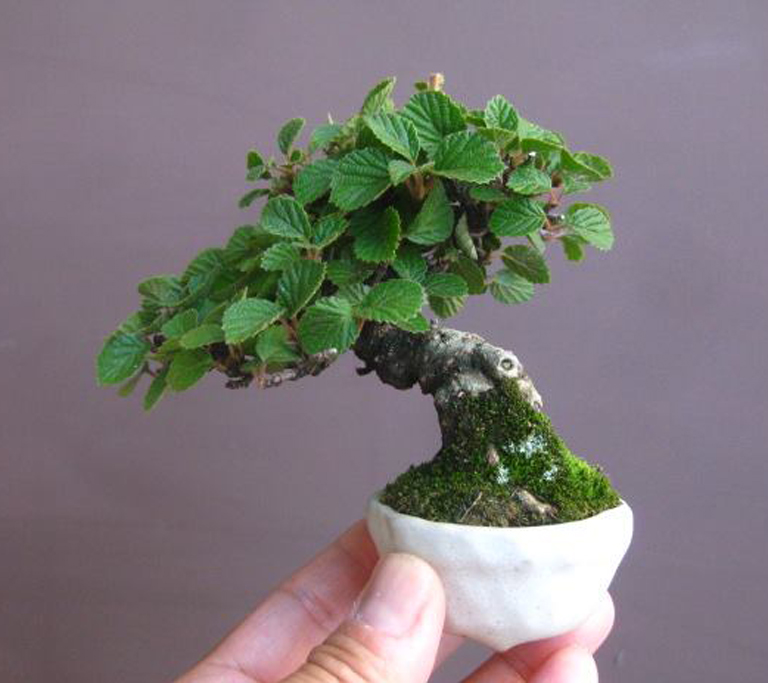
Perfectly small and just perfect. The artist (Haruyosi) doesn’t mention the variety, but the leaves look a bit like Nothofagus gunnii.
This is our second Bonsai in Hand post this summer. Without belaboring the point, one of the bests ways to show size is to provide something for contrast. In the case of small trees, nothing works quite as well as the human hand.
All the bonsai shown here belong to Haruyosi. We’ve featured his trees in the past and will no doubt feature them in the future.
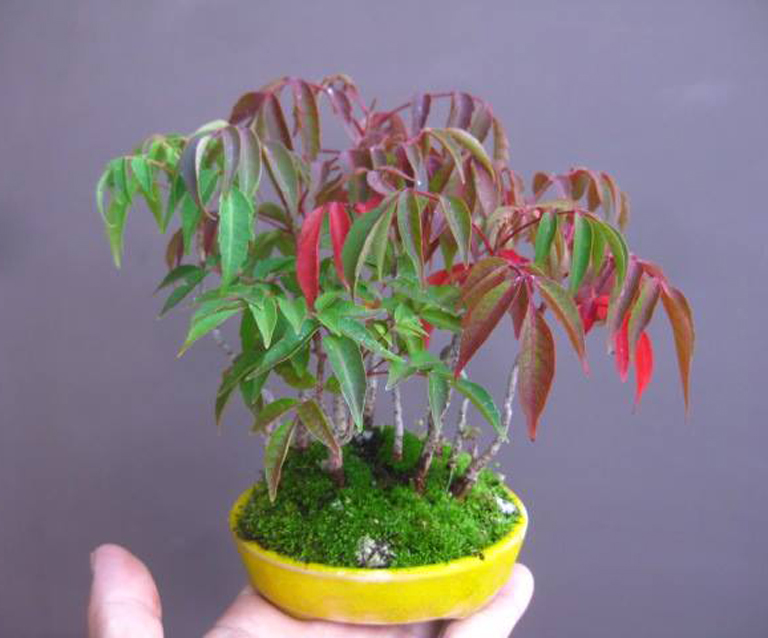
Japanese wax tree (Toxicodendron succedaneum). The red and green leaves contrast well with the yellow pot. BTW, brilliant yellow pots like this one are quite rare.
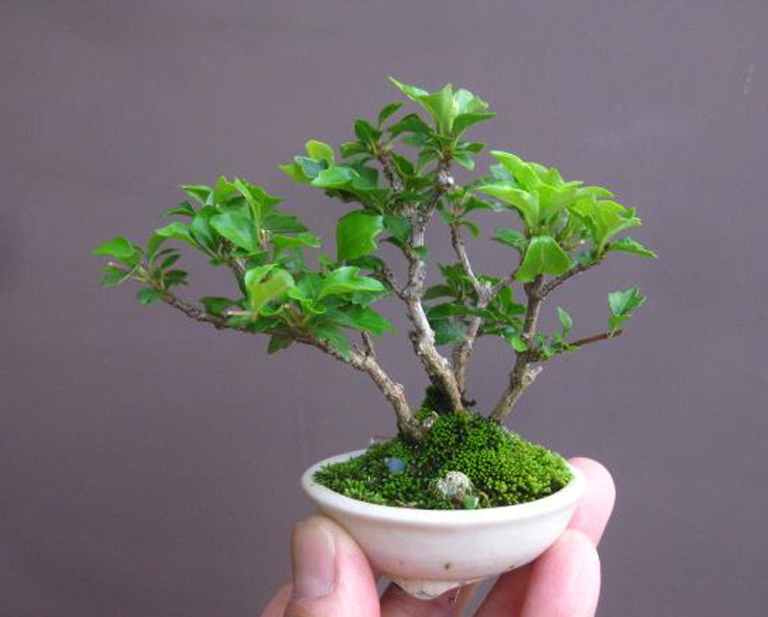
You don’t often see four trunks in Japanese bonsai as odd numbers are almost always preferred. No problem though. No name either.

The world’s smallest root-over-rock Trident maple.
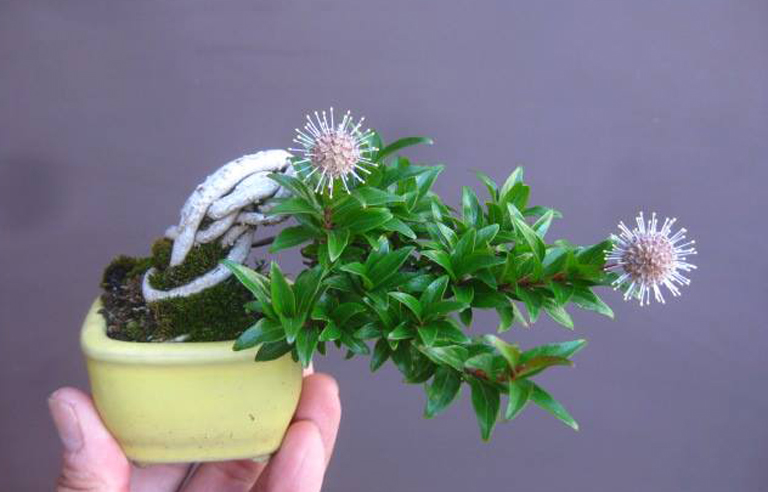
I have no idea what this strange and wonderful plant is.
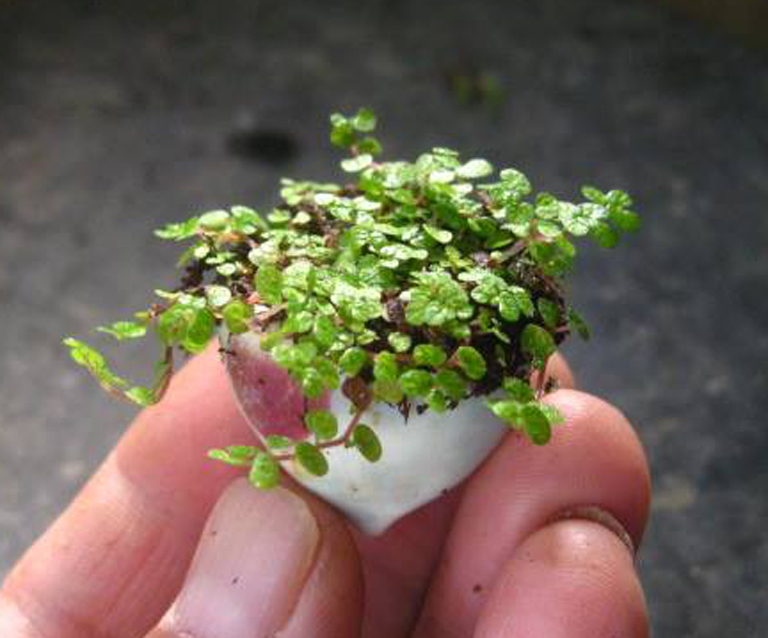
No name is given with sweet little companion, though it looks quite familiar.
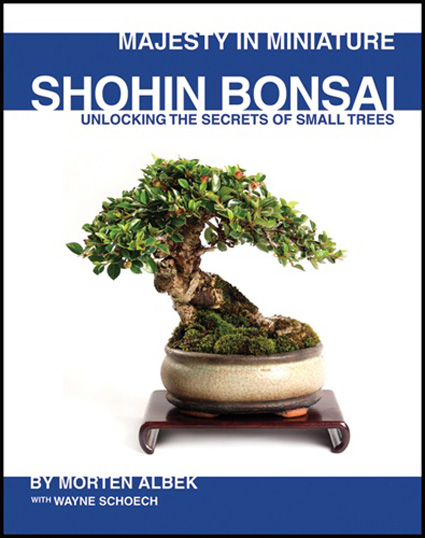
Want to find out more about tiny bonsai? This detailed guide to Shohin bonsai is on special for only 12.00.
When you mention the bright yellow pot, Haruyosi makes his own pots!
Hi Wayne.
Interesting I just had to do a search regarding the first picture of the Nothofagus gunnii as I haven’t heard of it or seen it before.
Dam turns out that it is native to Tasmania / Australia.
here is a link that I found regarding it.
http://www.tasmaniangeographic.com/the-last-deciduous-tree/
Thanks for posting it, something else I have to look out for.
JC
The top most image is definitely not Nothofagus gunnii, but the leaves are a bit similar in shape and size. I live in Tasmania and N. gunnii or Deciduous Beech is endemic to our island. It is Australia’s only winter deciduous tree and grows in alpine areas. It has been grown as a bonsai but is temperamental and difficult. Closely related is Nothofagus cunninghamii or Myrtle Beech which we are growing successfully as bonsai, it also has naturally very small leaves. I would take a wild guess that the top image may be a type of Viburnum.
Thanks Dennis,
Yeah. I mention that he makes his own pots in previous posts, but failed to mention it this time.
Hi John and Ambrose,
Thanks for your valuable input. I didn’t know about the almost complete lack of deciduous trees down under, though now that I think about it…. Is this also the case in New Zealand?
It’s uncanny how much leaves of the gunnii look like this tree. However, looks like Ambrose nailed it. I just stumbled across this very same tree on pinterest: http://www.pinterest.com/pin/914862397754102/